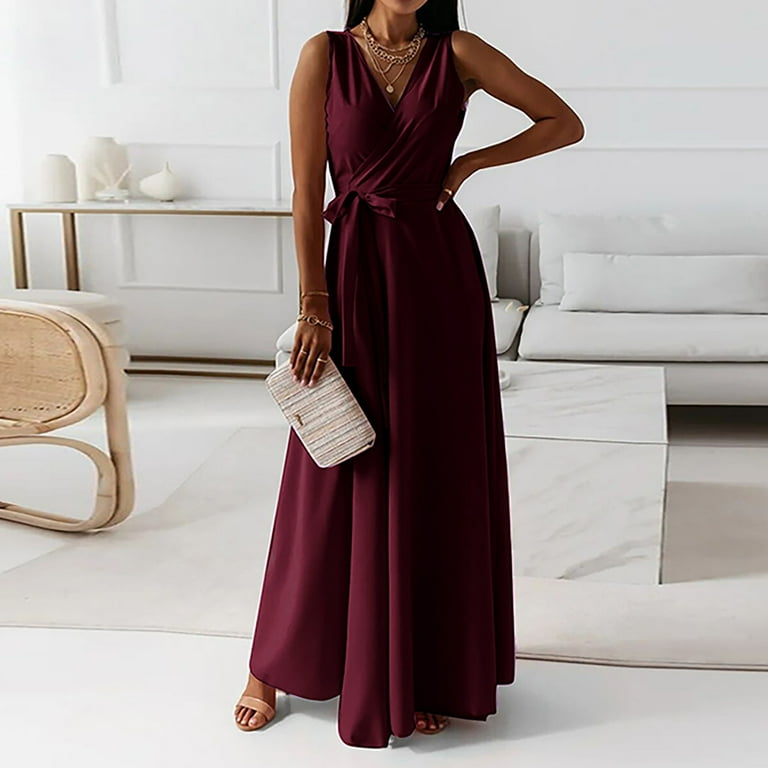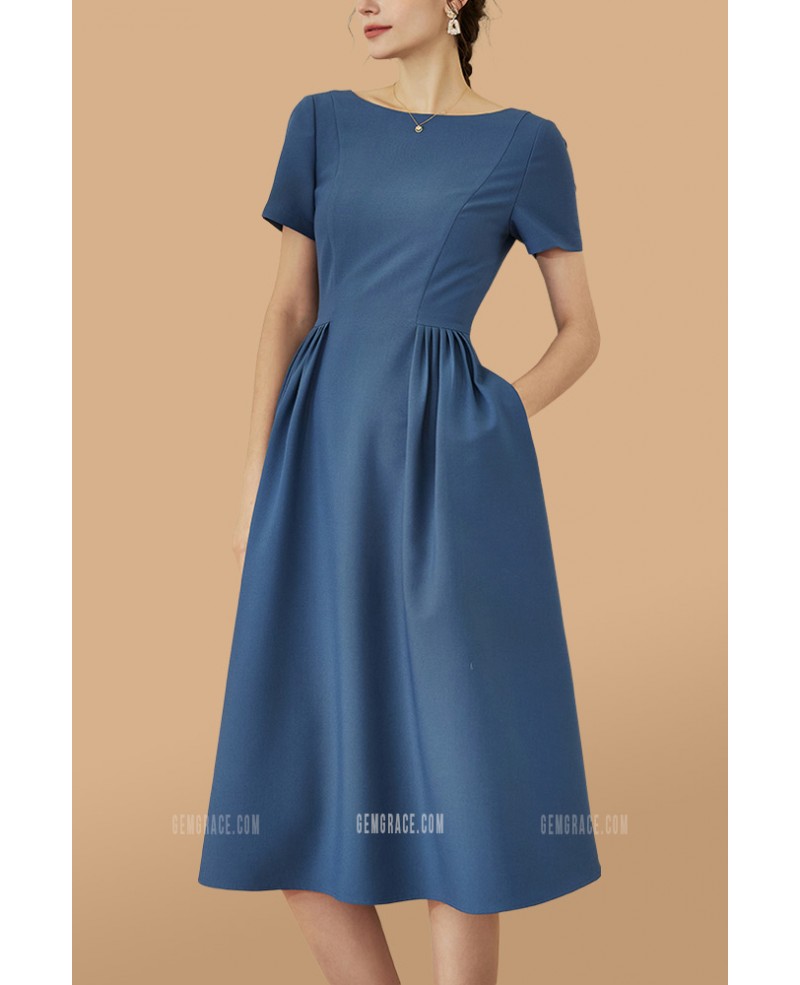5 Chic Ways to Style Semi-Formal Dresses for Every Occasion
In the world of fashion, semi-formal dresses serve as a versatile cornerstone, bridging the gap between casual comfort and formal elegance. These garments are not merely clothing items but strategic tools for self-expression, adapting seamlessly to diverse events from cocktail parties to daytime gatherings. By mastering a few styling techniques, you can transform a single semi-formal dress into multiple outfits that radiate confidence and sophistication. This guide delves into five chic approaches, backed by objective insights and expert opinions, to help you curate a wardrobe that is both functional and fashionable. Let’s explore how to elevate your style with these dresses, ensuring you stand out for all the right reasons.
1. Accessorize with Statement Jewelry and Footwear
Accessorizing is a powerful method to redefine the appeal of semi-formal dresses. According to fashion historian Valerie Steele, as cited in her book “The Berg Companion to Fashion,” accessories act as “non-verbal communicators” that can shift an outfit’s perception from simple to striking. For instance, pairing a classic A-line semi-formal dress with bold, geometric necklaces or chandelier earrings draws attention to the neckline and face, creating a focal point that enhances overall elegance. Scientifically, this aligns with the Gestalt principle of visual perception, where the human eye is naturally drawn to contrasting elements, making accessories a tool for emphasis. From a practical standpoint, opt for metallic or gemstone pieces that reflect light, adding depth to your ensemble. Footwear plays an equally crucial role; strappy heels or embellished flats can dictate the dress’s formality level. As noted on Quora by style influencers, shoes with intricate details, such as bows or metallic accents, can elevate a basic dress for evening events, while block heels offer stability for daytime occasions. By integrating these elements, you not only personalize your look but also extend the versatility of your semi-formal dresses, ensuring they adapt to settings from garden parties to indoor galas. Remember, the key is balance—over-accessorizing can clutter the outfit, so let the dress’s silhouette guide your choices.

2. Layer with Outerwear for Seasonal Adaptability
Layering transforms semi-formal dresses into year-round staples, blending style with practicality. In colder months, a tailored blazer or a chic trench coat can add structure and warmth, while in warmer weather, lightweight cardigans or denim jackets offer a relaxed touch. This approach is supported by environmental psychology research from institutions like the University of Cambridge, which highlights how clothing layers can influence comfort and confidence in varying climates. For example, a study on adaptive dressing suggests that layering allows for thermal regulation, making it ideal for events that transition from day to night. From a fashion perspective, take inspiration from iconic films like “Breakfast at Tiffany’s,” where Audrey Hepburn’s character often layered dresses with elegant coats, embodying timeless sophistication. On YouTube, style experts like Alexa Chung emphasize that outerwear should complement the dress’s fabric and cut; for instance, a silk semi-formal dress pairs well with a wool blend blazer for a polished office look, while a lace dress might be balanced with a leather jacket for an edgy twist. Additionally, consider the color theory—neutral outerwear can unify bold dress patterns, creating a cohesive appearance. By mastering layering, you not only enhance the functionality of your wardrobe but also invest in pieces that offer longevity, often at discounted prices during seasonal sales. This method proves that semi-formal dresses are not limited by weather but are adaptable canvases for creative expression.

3. Play with Textures and Fabrics for Depth
Incorporating diverse textures and fabrics into your semi-formal dresses ensemble adds tactile interest and visual depth, making your outfit memorable. Textiles like chiffon, satin, or lace can evoke different emotions and contexts; for instance, satin is often associated with luxury and evening wear, as noted in Wikipedia’s entry on fabric types, due to its smooth surface and light reflection properties. This scientific explanation ties into how materials affect perception—a dress with a mix of matte and shiny textures can create a dynamic look that stands out in crowded settings. From a cultural standpoint, books such as “The Fashion System” by Roland Barthes discuss how fabrics convey social signals; a velvet-trimmed semi-formal dress might imply warmth and richness, suitable for holiday events. In practice, experiment with layering textures: pair a sleek silk dress with a chunky knit scarf for a contrast that balances elegance and comfort. Celebrities like Blake Lively have endorsed this on Twitter, sharing how mixing fabrics like sequins with tweed can redefine a dress’s versatility. Moreover, understanding fabric care can prolong the life of your garments; for example, delicate materials may require professional cleaning, but investing in quality pieces often means they retain their appeal longer, especially when purchased at discounted rates from end-of-season sales. By embracing texture play, you transform a simple semi-formal dress into a multi-dimensional statement, perfect for occasions ranging from art openings to formal dinners.
4. Opt for Versatile Colors and Prints
Choosing the right colors and prints for your semi-formal dresses can dramatically expand their usability across various occasions. Color psychology, as explored in resources from Baidu Baike, indicates that hues like navy blue convey trust and professionalism, making them ideal for business-casual events, while pastels evoke calmness for daytime gatherings. Similarly, prints such as florals or geometric patterns can inject personality; for example, a floral-print dress might reference nature-inspired themes popularized in art movements like Impressionism, adding an artistic flair. From a practical angle, solid colors like black or beige serve as blank slates, easily accessorized for different settings—a point emphasized by style gurus on Quora, who note that a little black dress can be dressed up or down with minimal effort. In terms of versatility, consider the season: brighter shades suit spring and summer, while deeper tones align with autumn and winter, allowing you to rotate your wardrobe efficiently. Additionally, prints should complement your body type; vertical stripes can create an illusion of height, as supported by optical illusions studied in university literature on visual perception. By selecting semi-formal dresses in adaptable colors and prints, you not only maximize their wearability but also make smart investments, as these pieces often remain stylish year after year, especially when bought at discounted prices during clearance events. This strategy ensures that your dress collection remains fresh and relevant, ready for any invitation that comes your way.

5. Incorporate Functional Details like Pockets and Adjustable Elements
Integrating functional details into semi-formal dresses enhances both aesthetics and practicality, making them indispensable in a modern wardrobe. Pockets, for instance, are not just utilitarian but also add a touch of effortless chic, as seen in designs from brands like Reformation, which often feature hidden pockets in their dresses. This aligns with ergonomic principles discussed in design textbooks, where functionality meets form to improve user experience. From a social perspective, pockets empower wearers by providing convenience for carrying essentials, a feature celebrated by influencers on YouTube who advocate for fashion that doesn’t compromise on utility. Adjustable elements, such as tie waists or convertible straps, allow for a customized fit, adapting to different body shapes and occasions. For example, a dress with an adjustable belt can transition from a loose, flowy silhouette for a brunch event to a defined, hourglass shape for an evening party. Historical references, like the evolution of the “sheath dress” in the 1950s, show how adjustable features have long been used to enhance versatility. Moreover, these details often come at no extra cost if you shop during sales, offering discounted opportunities to invest in high-quality pieces. By prioritizing functional aspects in your semi-formal dresses, you create outfits that are not only stylish but also resilient and adaptable, proving that fashion can be both beautiful and intelligent.

Embracing these five styling methods unlocks the full potential of semi-formal dresses, turning them into dynamic assets for any event. From accessorizing with precision to selecting versatile fabrics and colors, each strategy is grounded in objective insights and expert knowledge, ensuring your choices are both informed and inspiring. By integrating these approaches, you cultivate a wardrobe that celebrates individuality and adaptability, ready to make a statement wherever you go.






